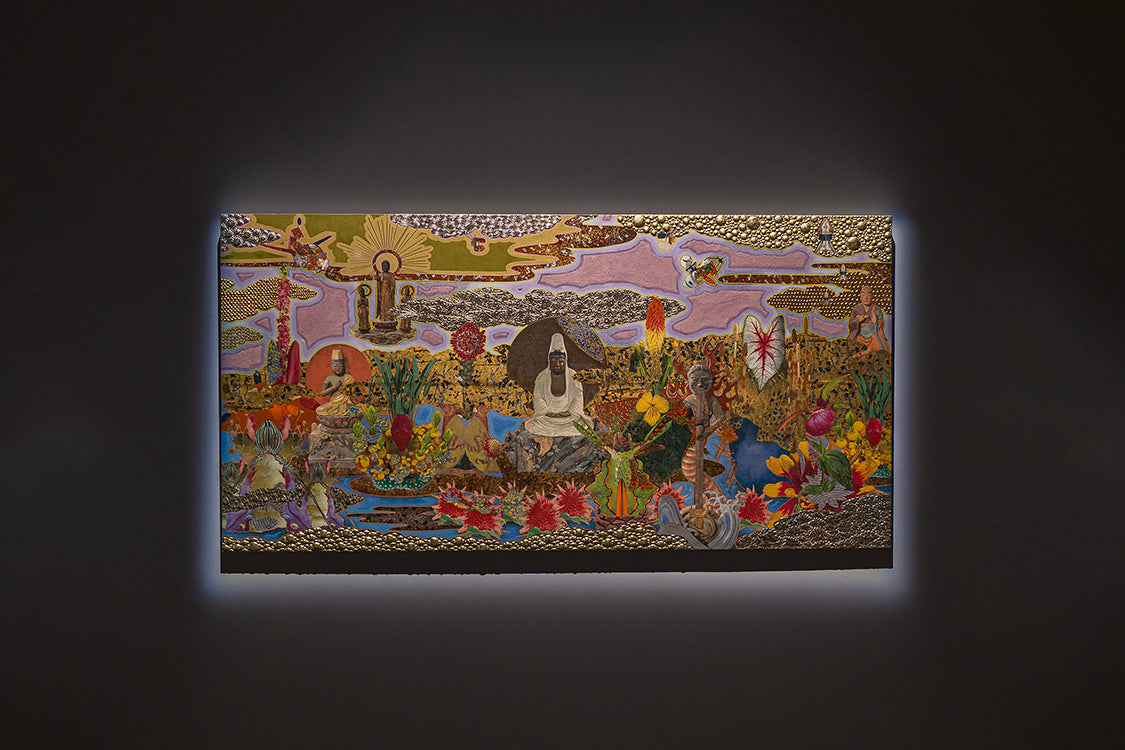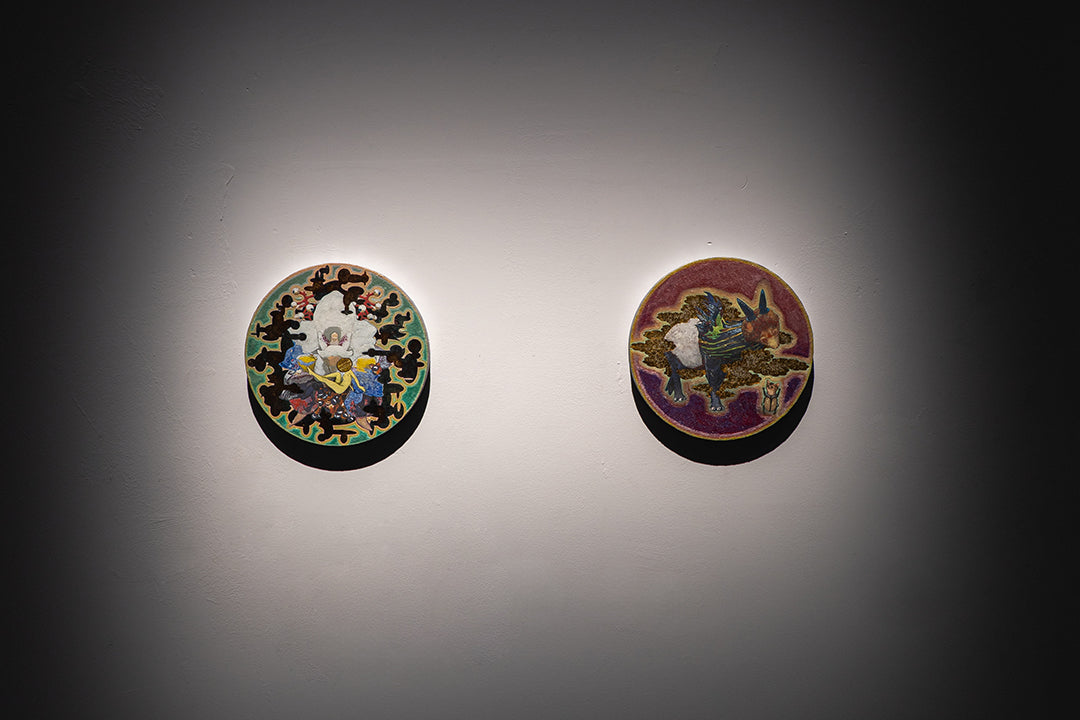ARTICLES
A Bridge Between Hybrid Fantasies and Tradition: An Interview with Masatake Kozaki
2025.06.23
INTERVIEW

Whitestone Gallery Singapore presented Story Keepers: Tales and Traditions, an exhibition that explored the enduring influence of storytelling in Japan. Through contemporary art, themes of transformation, spirituality, and identity were examined, offering new interpretations of ancient narratives.
In this context, we are thrilled to feature the works of Masatake Kozaki, whose art uniquely depicts the tougen-kyo (earthly paradise) in Japanese ancient stories along with the historical sites in his home region. He was profoundly inspired by 16th Century Dutch Painter—Hieronymus Bosch, and generated a distinctive artistic style that mixed painting mineral pigments with acrylics onto traditional Japanese paper, and delicately applied gold and silver leaves to resemble the notion of a medieval period painting. In this interview, we delve into his consistent approach to connecting his heritage with a modern and artistic perspective, offering a more contemporary interpretation of his root concepts and traditional Japanese material and motifs. Kozaki’s intricate and attention-drawing works enable him to bridge the past, present, and future.

Whitestone Gallery Singapore
- Your work features hybrid creatures. Can you share the inspiration behind it?
Kozaki: In Western culture, you see mythical creatures like the Chimera and Gryllus from Greek mythology; in the East, there are dragons, Nue, and fantastical animals from texts like the Shan Hai Jing. In Japan, such hybrids also appear in subcultures—Godzilla (a fusion of a gorilla, a whale, and radiation). As a child, I watched Kamen Rider on television, and the various monsters featured in that show are truly part of my formative visual memories.
In 15th-century religious art, especially in Hieronymus Bosch’s The Garden of Earthly Delights, the creatures that appear seem to dislocate the very joints of the world. They are more kitschy and humorous than frightening, and somehow carry a sense of humanity. Similar to the Tree of Life from the Bible, it symbolises an exaggerated vision of humankind’s imagined future. In my own paintings, I have also applied the similar hybrid creatures as the symbols of exaggerated, speculative futures that reflect our desires and anxieties.

Masatake Kozaki“TOUGEN Osawa 1” 2013, 81.0 x 162.0 cm, Hemp paper, mineral pigments, acrylic, foil, co-seal on board
- Can you describe your hometown and how it has shaped or influenced your artistic practice?
Kozaki: My hometown is Futaba in Fukushima Province, where the nuclear disaster occurred. During the time of the accident, I was residing in Yamagata, a region surrounded by mountains, where I was employed at a university and directly impacted by the disaster. My parents, however, were forced to evacuate and still live in a neighboring area.
Futaba has made progress in its reconstruction efforts and is preparing for residents to return to their homes. An archive center documenting the nuclear disaster has also been established. However, the area around my family’s house is still surrounded by barricades.
Last year, I visited Den Bosch, the hometown of Hieronymus Bosch. That town, too, has a turbulent history—marked by earthquakes, plagues, and wars—and those experiences are vividly reflected in his paintings. I believe that my own works may have unconsciously embedded the effects of the disaster and even COVID-19.

Masatake Kozaki “Evolution” 2022, 49.8φ, Oil, Foil, Acrylic, Mineral Pigments and Hemp Paper on Board
- What drew your attention to focus on traditional Japanese motifs like Daruma and Kokeshi dolls?
Kozaki: Everything I choose as a motif in my paintings symbolises human desire or prayer. For example, hybrid chimeras, Trees of Life, musical instruments, spaceships, naked women, they are all representations of people’s wishes and longings. Daruma and Kokeshi dolls are no different; they are embodiments of hope.
Kokeshi dolls are a folk craft unique to the Tōhoku region, and some believe their origins may even be associated with Russian Matryoshka dolls. In the paintings of Bosch and Bruegel, scenes of children’s games are often depicted. Growing up in the snowy, harsh environment of Tōhoku, I feel a profound connection to the sensibilities conveyed by these Northern Renaissance artists. There is a shared spirit of playfulness, resilience, and expression that deeply resonates with me.

Masatake Kozaki “Together” 2022, 49.8φ, Oil, Foil, Acrylic, Mineral Pigments and Hemp Paper on Board